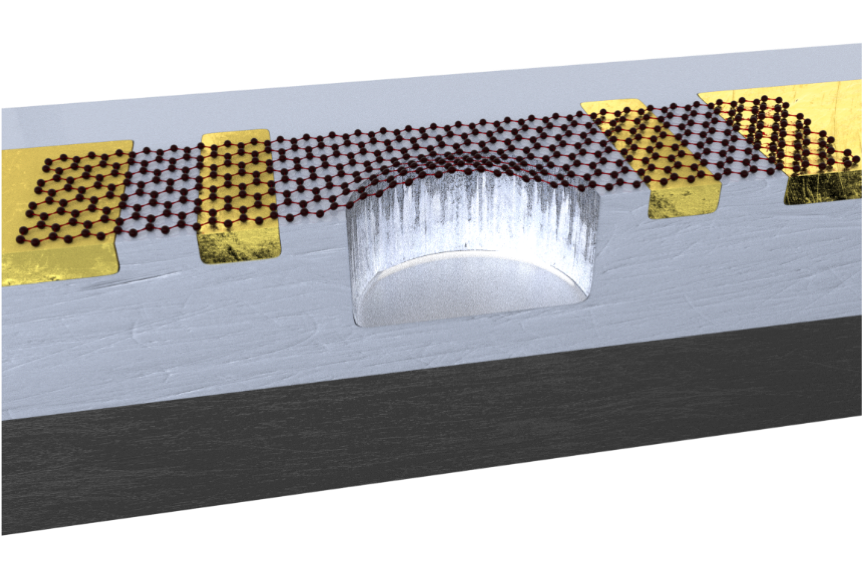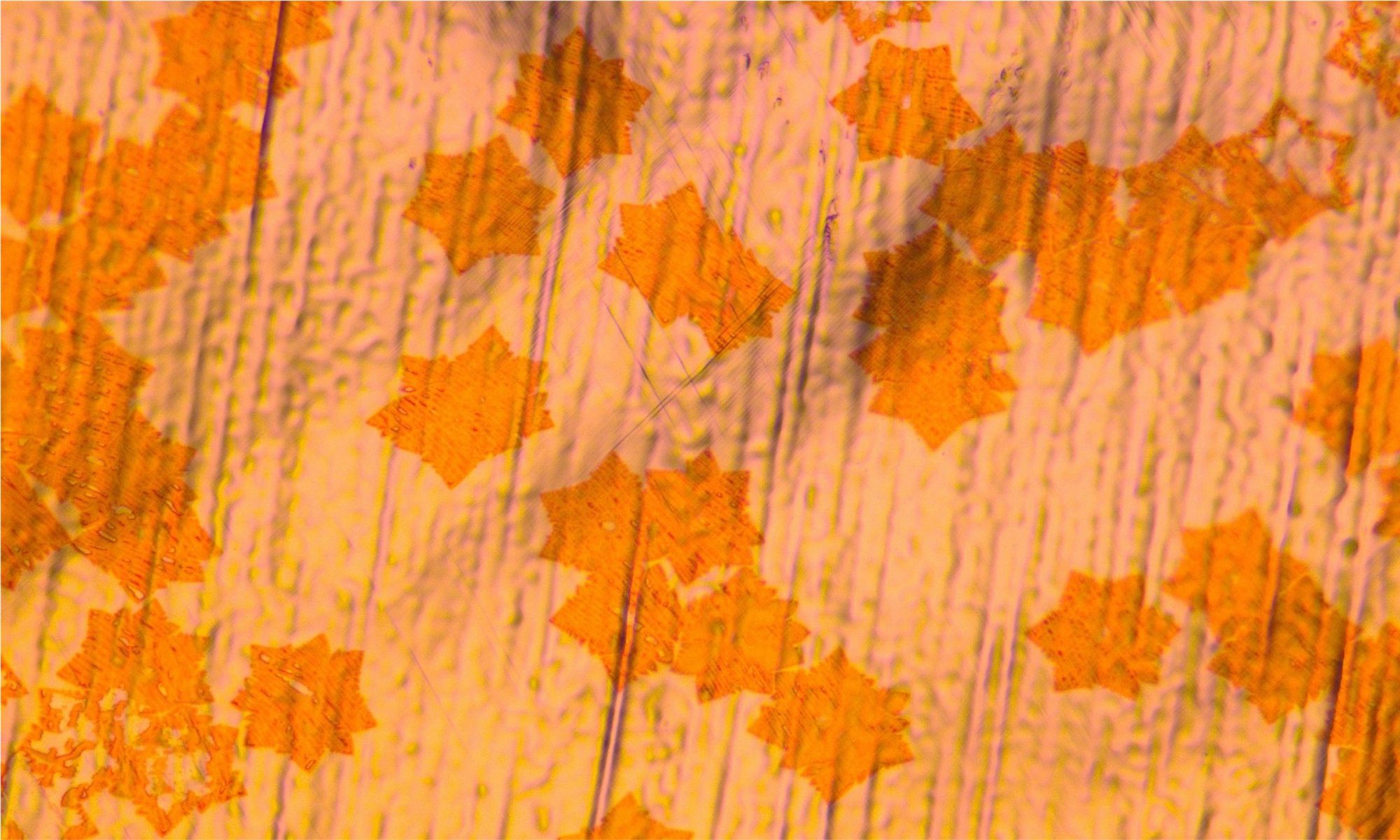Max Lemme and co-workers have recently published a review article on nanoelectromechanical (NEMS) sensors based on suspended two-dimensional (2D) materials in the journal RESEARCH, an open-access multidisciplinary journal launched in 2018 as the first journal in the Science Partner Journal (SPJ) program. The paper is an invited contribution to a special issue on “Progress and challenges in emerging 2D nanomaterials – preparation, processing, and device integration”, and has the purpose of contributing to the development of the field of 2D materials for sensor applications and to their integration with conventional semiconductor technology.

Schematics of a pressure sensor based on a suspended graphene membrane (Image: S. Wagner@AMOGmbH)
“I believe NEMS sensors based on 2D materials will be essential for satisfying the demand for integrated, high-performance sensors set by applications such as the Internet of Things (IoT) and autonomous mobility”, says Lemme. The review summarizes the many studies that have successfully shown the feasibility of using membranes of 2D materials in pressure sensors, microphones, mass and gas sensors – explaining the different sensor concepts and giving an overview of the relevant material properties, fabrication routes and operation principles.
“Two dimensional materials are ideally suited for sensors”, says Lemme, “as they allow realizing free-standing structures that are just one of a few atom thick. This ultimate thinness can be a decisive advantage when it comes to nanoelectromechanical sensors, since the performance often depends critically on the thickness of the suspended part. Furthermore, many 2D materials have unique electrical, mechanical and optical properties that can be exploited for completely new concepts of sensor devices.”
The review – which includes contributions from RWTH Aachen University, AMO GmbH, Universität der Bundeswehr Munich, KTH Royal Institute of Technology, TU Delft, Infineon and the Kavli Institute of Nanoscience – discusses the different readout and integration methods of different sensors based on 2D materials, and provides comparisons against the state of the art devices to show both the challenges and the promises of 2D material based nanoelectromechanical sensing.
“Proof-of-concept sensor devices based on suspended 2D materials are almost always smaller than their conventional counterparts, show improved performances, and sometimes even completely novel functionalities”, says Peter G. Steeneken, leader of work-package 6 (Sensors) in the Graphene Flagship and co-author of the paper. “However, there are still enormous challenges to demonstrate that 2D material-based NEMS sensors can outperform conventional devices on all important aspects – for example the establishment of high-yield manufacturing capabilities. The Graphene Flagship represents the ideal platform to address these challenges, as it fosters collaborations between world-leading groups to achieve a set of well-defined goals. This paper is an example of how, by bringing together complementary expertise, we can achieve more.”
This work was financially supported by the European Commission under the project Graphene Flagship [785219, 881603] and ULISSES [825272], the German Ministry of Education and Research (BMBF) under the project GIMMIK [03XP0210] and NobleNEMS [16ES1121], the German Federal Ministry for Economic Affairs and Energy (BMWi) and the European Social Fund in Germany under the project AachenCarbon [03EFLNW199], the Swedish Research Foundation (VR) (2015-05112), the FLAG-ERA project CO2DETECT funded by VINNOVA (2017-05108), the Dutch 4 TU Federation project High Tech for a Sustainable Future and the FLAG-ERA project 2DNEMS funded by the Swedish Research Foundation (VR) (2019-03412) and the German Research Foundation (DFG) [LE 2441/11-1].
